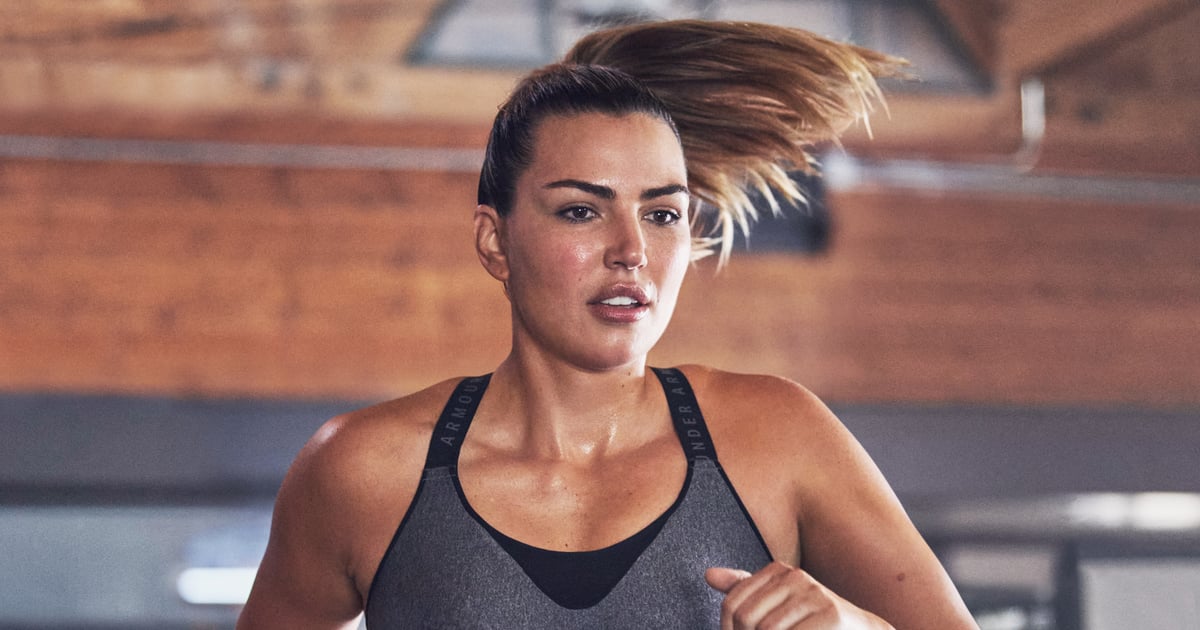
As someone who picked up running as an adult, I never had a running coach or was a part of a high school track or cross country team. So, everything I’ve learned about the sport has been from, well, just getting out there and running. For the most part, I’ve been able to lace up my UA HOVR™ Machina LT Running Shoes ($160), head out for a run, and pick up the skills I’ve needed to help me get to my goals. But one particular part of running always eluded me: breathing.
Now, I’ve known how you breath during runs and building up lung capacity are both important parts of running. But I’ve never known where to start. To help me understand the ins and out of breathing while running I asked Danielle Hirt, NASM personal trainer, RRCA certified running coach, and running coach at Formula Running Center for some pointers. And as it turns out, there’s so much more to strengthening my lungs and learning to breathe than I imagined.
What is lung capacity really?
Put simply, Hirt explained lung capacity is the amount of air your lungs can hold. The more air you can hold, the more oxygen your body can send into your bloodstream and thus to your muscles when they need it during aerobic activities — like running.
“Running is an aerobic activity that requires oxygen to function,” she noted. “When we run, our muscles contract; this contraction is made possible by a chemical form of energy called adenosine triphosphate (ATP). As we continue to run it is important that our cells and muscles are able to receive more oxygen in order to continue producing ATP. Without oxygen the cells cannot continue to support the demands of running.”
Essentially, runners need to learn to breathe properly so they can get as much oxygen into the bloodstream and to the working muscles as possible.
Does it matter what kind of runner I am?
Really all kinds! Both distance runners and sprinters need to be able to inhale large amounts of oxygen in order to perform their sport well.
“Where the athletes differ is when they perform sport specific exercises,” Hirt explained.
“Sprinters will use less oxidative energy sources when performing a 100M sprint — around two percent of the energy used during a sprint comes from oxidative energy sources — compared to distance runners who draw 90 percent or more of their energy from the oxidative energy system,” she added. “When sprinters take off from the blocks the first energy system to be drawn on is oxidative, so if that system is not strong, the sprinter is already behind on their potential.”
How can I improve my breathing with exercise?
“Runners can use cross training as a way to strengthen their lungs,” said Hirt. “Interval training is a great way to get benefits without adding an additional day of running into your schedule.” Plus, interval training is a great way to push your aerobic threshold and improve your overall lung capacity, Hirt added. She suggested opting for 20 seconds on, 10 seconds off on the elliptical, bike, or rower. If you don’t have access to machines, this mini interval workout completing a 10-minute warm up of dynamic stretching and a quick five-minute walk will also work.
- 20 seconds of burpees with 10 seconds of rest. Repeat four to eight times.
- 20 seconds of mountain climbers with 10 seconds rest. Repeat four to eight times.
- 20 seconds jumping jacks with 10 seconds rest. Repeat four to eight times.
How can I practice my breathing techniques when I’m not breaking a sweat?
The good news is that although working on lung capacity does require some thought and attention while training, Hirt explained there are some breathing exercises you can do when you’re working out.
Some as simple as diaphragmatic breathing is effective. Breathing from your diaphragm, or the dome-shaped muscle at the base of your lungs designed for breathing, can be instrumental in helping to train your lungs to take in more oxygen.
“Practice this breathing in a seated position,” explained Hirt. “Place one hand at the base of your lungs — bottom of ribs and above stomach — and the other hand on your chest. Take in a deep breath and feel both hands rise. Inhale through your nose for a count of two. Exhale through slightly opened mouth for a count of two.” Continue this breathing sequence six to 10 times, making sure that it’s your abdomen that’s rising and not just your chest
Another option, is to try this same breath laying on your back. “As you practice more, you will be able to increase the counts on each inhale and exhale, working up to a 10 count for each,” added Hirt.
Lastly, Hirt noted that a holding-your-breath exercise is also a great tool. “Take in a deep breath and hold for 10 seconds,” she said. “Resist the urge to hold air in your cheeks and instead focus on filling up the belly and lungs.” Release the breath slowly and repeat four to six times.
Bottom line: Practicing breathing and building lung capacity is vital to any running program. But, as Hirt noted, it’s not just runners who should concentrate on building lung capacity. Building a strong aerobic system is helpful for day to day tasks and can keep you healthy and active in general in life, Hirt added. “Lung capacity begins to deteriorate in our thirties, so taking time to focus on breathing is something everyone can benefit from,” she noted.
